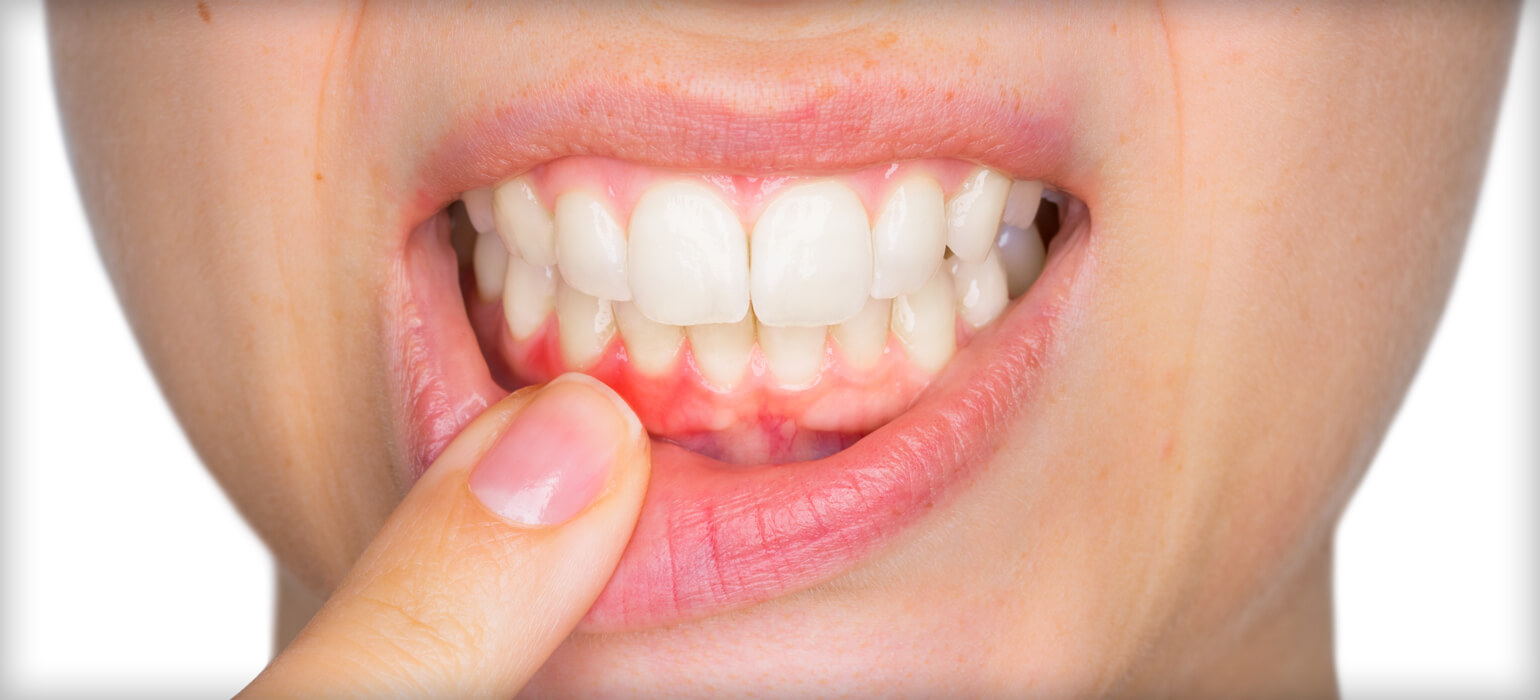Periodontal (gum) Disease Treatment

Periodontal disease damages the surrounding soft tissues and bone that support the teeth. It is predominantly caused by the accumulation of bacteria, mucus and other particles in the form of plaque or tartar that sit between the teeth and the gums. Periodontal disease can range in severity from a simple gum inflammation, known as gingivitis, to more serious inflammation of the periodontal tissues. Left untreated periodontal disease can result in significant tissue damage and eventual tooth loss.
The progression of periodontal disease is often painless. As a result, the affected individual may not be aware of an ongoing disease process. This is why it is so important to recognize the signs of the earliest stage of periodontal disease, which is gingivitis. The symptoms of gingivitis typically include red, swollen and bleeding gums. Treatment instituted at this point is often sufficient to reverse the course of the disease and to avoid any permanent damage to the periodontal tissues. A series of deep dental cleanings, an improved home care regimen and a commitment to regular maintenance may be all that is required to prevent this stage of periodontal disease from progressing.
Left untreated, gingivitis can escalate into periodontitis. However, there are other factors that can contribute to the escalation of periodontal disease, including smoking, genetic tendencies, and unchecked diabetes. In either case, when periodontal disease has progressed to a more advanced stage there is usually clinical and radiographic evidence of damage to the bone and soft tissues supporting the teeth. Periodontal treatment in this phase is designed to halt the progression of the disease and to restore tooth support as much as possible.
The first step in treating periodontitis is a nonsurgical treatment called scaling and root planing (SRP). The treatment involves scraping and removing the plaque and tartar off of your teeth and root surfaces by scaling and then smoothing away any roughness on the roots to prevent bacteria from gathering again. SRP may take more than one visit and a local anesthetic may be used to prevent any discomfort during the treatment. After this process, the gums will heal and reattach themselves to the healthy, clean surfaces of the teeth. Within a few weeks, we will evaluate your healing and decide if further treatment is necessary.
Additional treatment if SRP is not effective may involve medications to control the bacteria, surgery to reduce the size of the pockets between the teeth and gums, gum grafting surgery and bone grafting surgery.
Periodontal disease is a serious infection under your gum line.
ARESTIN® (minocycline hydrochloride) is an antibiotic that kills the bacteria that causes the infection.
- It’s placed directly in the infected areas—or “pockets”—in your gums.
- It’s applied right after scaling and root planing, the dental procedure that disrupts stubborn plaque and bacteria below your gum line—where brushing and flossing can’t reach.
ARESTIN® starts working quickly, right at the source of infection, and keeps fighting bacteria long after you leave the dental office. 1,2
ARESTIN® fights infection and inflammation for 30 days,2 and provides significantly better results than scaling and root planing alone for up to 90 days.3
1. Oringer RJ, Al-Shammari KF, Aldredge WA, et al. Effect of locally administered minocycline microspheres on markers of bone resorption. J Periodontol 2002;73:835-842.
2. Goodson JM, Gunsollwy JC, Grossi SG, et al. Minocycline HCl microspheres reduce red-complex bacteria in periodontal disease therapy. J Periodontol 2007;78(8):1568-1579.
3. Williams RC, Paquette DW, Offenbacher S, et al. Treatment of periodontitis by local administration of minocycline microspheres: a controlled trial. J Periodontol 2001;72:1535-1544.
